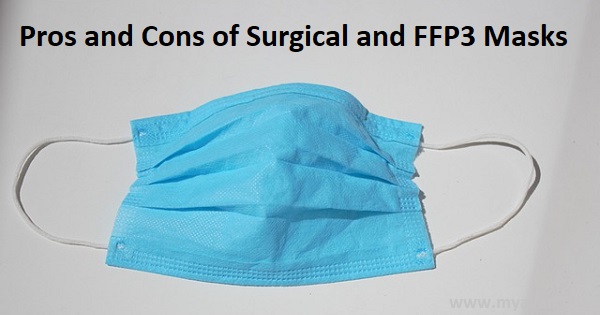A shortage of PPE supplies during the COVID-19 pandemic has recently raised questions about our preparedness. Surgical and FFP3 Masks were two of such basic protective equipment that ran short on the count. How are Surgical & FFP3 respirators useful, and what are their limitations? Pros and Cons of Surgical and FFP3 Masks evaluate further facts.
A surgical mask (face mask) is also used as a procedure mask during medical procedures and surgeries. This protective covering is categorized in Personal Protective Equipment (PPE). Principally used by healthcare providers, this facial covering helps you contain the airborne contaminants and liquid particles away in patients or non-infected persons.
Many people have misconceptions about the uses of surgical masks for incoming dust and contaminant particles. People believe that surgical Masks protect you from breathing in airborne bacteria or viruses.
The filtering facepiece particulate respirator mask is also known as a respiratory protection mask or respirator. It is certified by the European Union to be used in the medical and health sectors. An FFP3 respirator mask protects against particulates such as dust particles and different airborne viruses.
FFP3 works exactly opposite to that of surgical masks. This half-face mask is used to cover the chin, nose, and mouth depending on filtering efficiency standards (FFP1 with <22% inward leakage, FFP2 with<8% with inward leakage rate, and FFP3 with<2% internal leakage rate).
This protective equipment is commonly used in Laboratories to avoid contact with harmful chemicals and hospitals as a breathing mask preventing incoming infectious pollutants.
The Bottom Line
Both surgical and FFP3 masks have their uses and limitations specific to the conditions. You must also consider using the right protective equipment depending on your status as improper disposal can lead to infection.

A medical mask is not effective at stopping airborne particles coming in while inhaling. Also, these masks are loosely-fitted around Nose and Mouth which turns your more vulnerable to virulent particulate.
A cloth may stop large particles, but not the fine, small ones that can filter into lungs and cause respiratory problems. If you want to use a cloth to cover your face, you need to threefold it to ensure protection from fine particle or droplets.
An FFP3 respirator has a valve to filter the incoming air that doesn't act as a filter for droplets from cough and sneeze. An infected person should not wear FFP3 respirator, as infection can spread easily through respirator-valve.
You can wear a respirator for about 8 hours after which, it can not be reused. You need to find a proper disposal method to ensure health safety.
Although wearing a mask may not seem harmful, it is vital to take precautions if sick. If your mask gets too moist, be sure to change it regularly in order to avoid any health risks.
According to the CDC, a well-fitting respirator, such as an N95, will provide the highest protection against COVID-19 and is a reasonable choice for many people.
Though cloth masks and surgical masks cannot provide an airtight seal across the face, the CO2 that escapes when you breathe out or talk is small enough to pass through the mask material easily. In contrast, the respiratory droplets that carry the virus that causes COVID-19 are much larger than CO2, so they cannot pass as easily through a properly designed and adequately worn mask.
KN95 masks and N95s filter out at least 95% of air particles, but N95 masks have stricter pressure drop requirements and are regularly considered the gold standard for masking. The CDC updated its masking recommendations earlier in January as omicron cases surged nationwide.